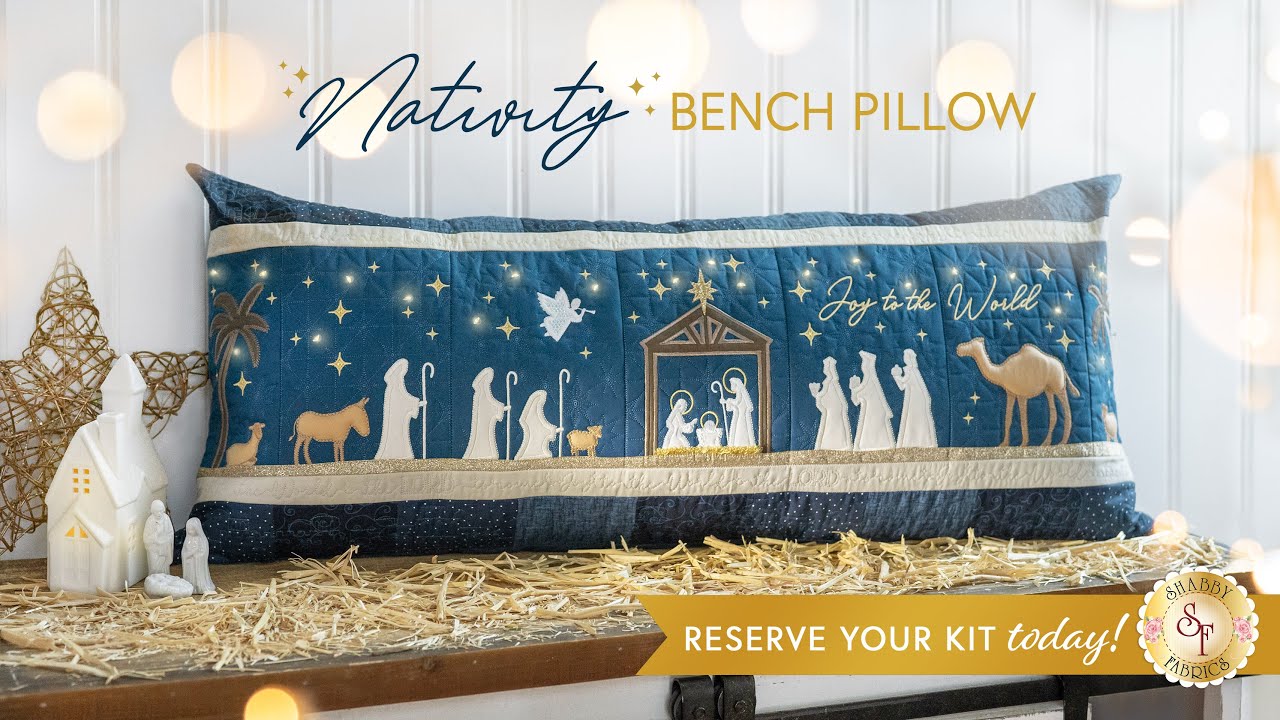Experience the beauty and wonder of the nativity story come to life with our exquisite nativity fabric. Crafted with meticulous attention to detail, our fabric captures the essence of this timeless tale, transporting you to a world filled with awe and reverence. Immerse yourself in the intricate artistry of each scene, as glorious angels herald the birth of the newborn king, and humble shepherds pay homage to the divine child. Feel the softness of the fabric beneath your fingertips, as it delicately weaves together the rich colors and textures of this sacred moment. Whether you’re using it to create a stunning holiday display, adorn a cherished heirloom, or simply to add a touch of elegance to your home, our nativity fabric is sure to captivate all who behold it. Elevate your holiday décor with this breathtaking fabric that embodies the spirit of Christmas. With its timeless beauty and enduring quality, our nativity fabric is a treasure you’ll cherish for years to come. Let the magic unfold as you bring the nativity story to life with this extraordinary fabric.

The History of Nativity Fabric
When it comes to the holiday season, one of the most beloved traditions is setting up a nativity scene. These scenes, depicting the birth of Jesus Christ, often include a variety of figurines and props, but one element that ties everything together is the fabric used for the backdrop and costumes. Nativity fabric plays a crucial role in bringing these scenes to life, and its history is steeped in tradition and symbolism.
The Significance of Fabric in Nativity Scenes
Fabric has always been a significant aspect of nativity scenes, as it helps create a visually appealing and realistic backdrop for the various characters. The choice of fabric can vary depending on the cultural and geographical context in which the nativity scene is being displayed. In some cases, the fabric used may reflect the traditional clothing worn in the region where the nativity scene is set, while in others, it may be chosen for its symbolic meaning.
The Symbolism of Colors in Nativity Fabrics
Nativity fabrics often come in a range of colors, each with its own symbolic significance. White is a common color used in nativity scenes and represents purity and innocence. It is typically associated with the baby Jesus and the Virgin Mary. Gold, on the other hand, symbolizes majesty and divinity. It is often used for the costumes of the three wise men, representing their gifts of gold to the newborn Jesus.
Blue is another color frequently seen in nativity fabrics, particularly in scenes depicting the Virgin Mary. It represents loyalty, faith, and the heavens. Red is often used to depict the robes of shepherds or other characters, symbolizing passion and sacrifice. Finally, green is associated with nature and new life, often used to represent the stable or other natural elements in the nativity scene.
The Role of Fabric in Different Cultural Traditions
While nativity scenes are a universal symbol of Christmas, the way they are depicted can vary significantly across different cultures. This is reflected in the choice of fabric and the overall design of the scenes. In some cultures, such as those in Latin America, vibrant and colorful fabrics are used to create visually striking nativity scenes. These fabrics often incorporate traditional patterns and designs, adding a unique cultural touch to the scene.
In contrast, in countries like Italy, nativity scenes often feature intricately detailed costumes made from luxurious fabrics. These scenes aim to recreate the atmosphere of the biblical era and pay close attention to historical accuracy. The choice of fabric in these scenes is crucial in bringing authenticity to the overall composition.
Contemporary Trends in Nativity Fabric
In recent years, there has been a growing trend towards using sustainable and eco-friendly fabrics in nativity scenes. Many individuals and organizations are opting for fabrics made from organic materials or recycled fibers, aligning with a broader movement towards sustainability. This shift reflects a desire to reduce the environmental impact associated with the production and use of fabric, even in traditional holiday displays.
Additionally, there has been an increased interest in handmade and artisanal nativity fabrics. These fabrics are often crafted by skilled artisans using traditional techniques, ensuring each piece is unique and of high quality. This trend emphasizes the importance of craftsmanship and supporting local artisans, further enriching the cultural significance of nativity scenes.
Conclusion
Nativity fabric has a rich history and plays a crucial role in bringing the story of the birth of Jesus Christ to life. From the choice of colors to the cultural traditions and contemporary trends, fabric selection in nativity scenes reflects both symbolism and cultural diversity. Whether it is a traditional scene or a modern interpretation, the fabric used serves as a visual representation of the magic and significance of the holiday season.
“Reserve Now: Unveiling the Enchanting Nativity Bench Pillow by Kimberbell”
List of Nativity Fabric
Nativity Fabric
| Fabric Type | Description | Usage |
|---|---|---|
| Velvet | Exquisite and luxurious, velvet fabric is a popular choice for nativity scenes. Its soft and plush texture adds a sense of elegance and richness to the overall display. Velvet fabric is often available in various colors, allowing for customization and creating a visually stunning nativity set. | Velvet fabric is commonly used for crafting the clothing of the nativity figures, such as the robes of the Wise Men and the shepherds. It adds a regal touch to their attire, enhancing the beauty and realism of the scene. |
| Linen | Linen is a versatile and durable fabric that has been used for centuries. With its natural, slightly rough texture and breathable properties, it lends an authentic and rustic feel to a nativity scene. Linen fabric often comes in earthy tones, perfectly complementing the humble and serene atmosphere of the birth of Jesus. | Linen fabric is commonly used for crafting the garments of the Holy Family, including Mary’s dress and Joseph’s tunic. Its natural appearance adds a sense of authenticity to their attire, capturing the simplicity and humility of their lives. |
| Silk | Known for its smooth and lustrous texture, silk fabric is a luxurious choice for nativity scenes. Its shimmering appearance adds an ethereal and majestic touch to the overall display. Silk fabric is available in various shades, allowing for customization and creating a visually captivating nativity set. | Silk fabric is often used for crafting the clothing of the angel figures in a nativity scene. Its glossy sheen enhances the celestial nature of the angels, making them appear radiant and heavenly. |
| Burlap | Burlap fabric, with its coarse and textured weave, provides a rustic and natural look to a nativity scene. Often available in earthy tones, burlap adds a sense of authenticity and simplicity to the overall display. Its rough appearance captures the essence of the humble setting of Jesus’ birth. | Burlap fabric is commonly used for creating the stable or manger in a nativity scene. Its rough texture resembles the rugged nature of the stable, further emphasizing the poverty and humility surrounding the birth of Jesus. |
As an expert in nativity fabric, it is important to carefully select the fabric types to create an enchanting and realistic scene. The choice of fabric greatly contributes to the overall ambiance and aesthetic appeal of the nativity set. Whether it is the regal elegance of velvet, the authentic simplicity of linen, the ethereal beauty of silk, or the rustic charm of burlap, each fabric type brings its own unique qualities to enhance the portrayal of this sacred event.

